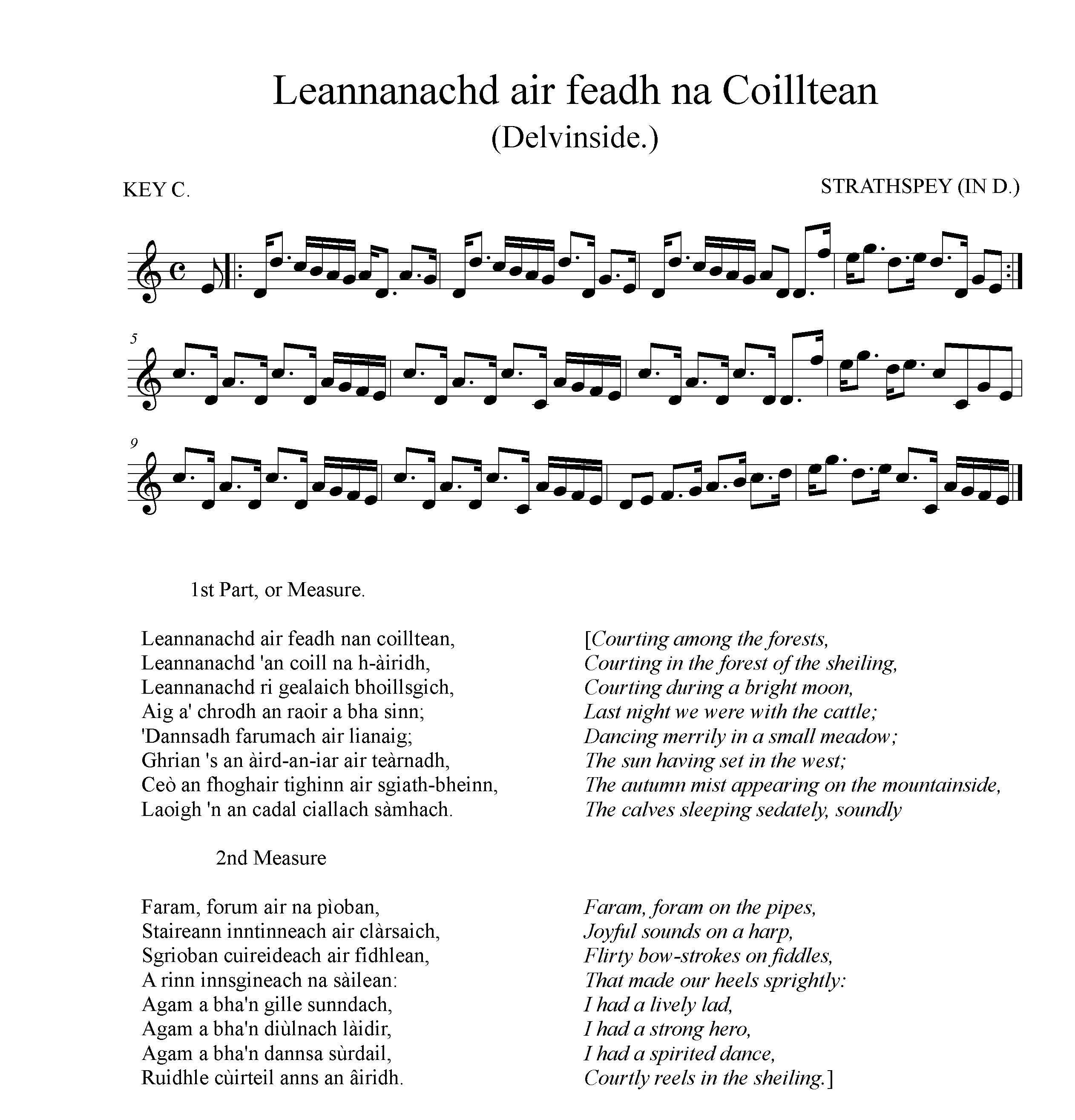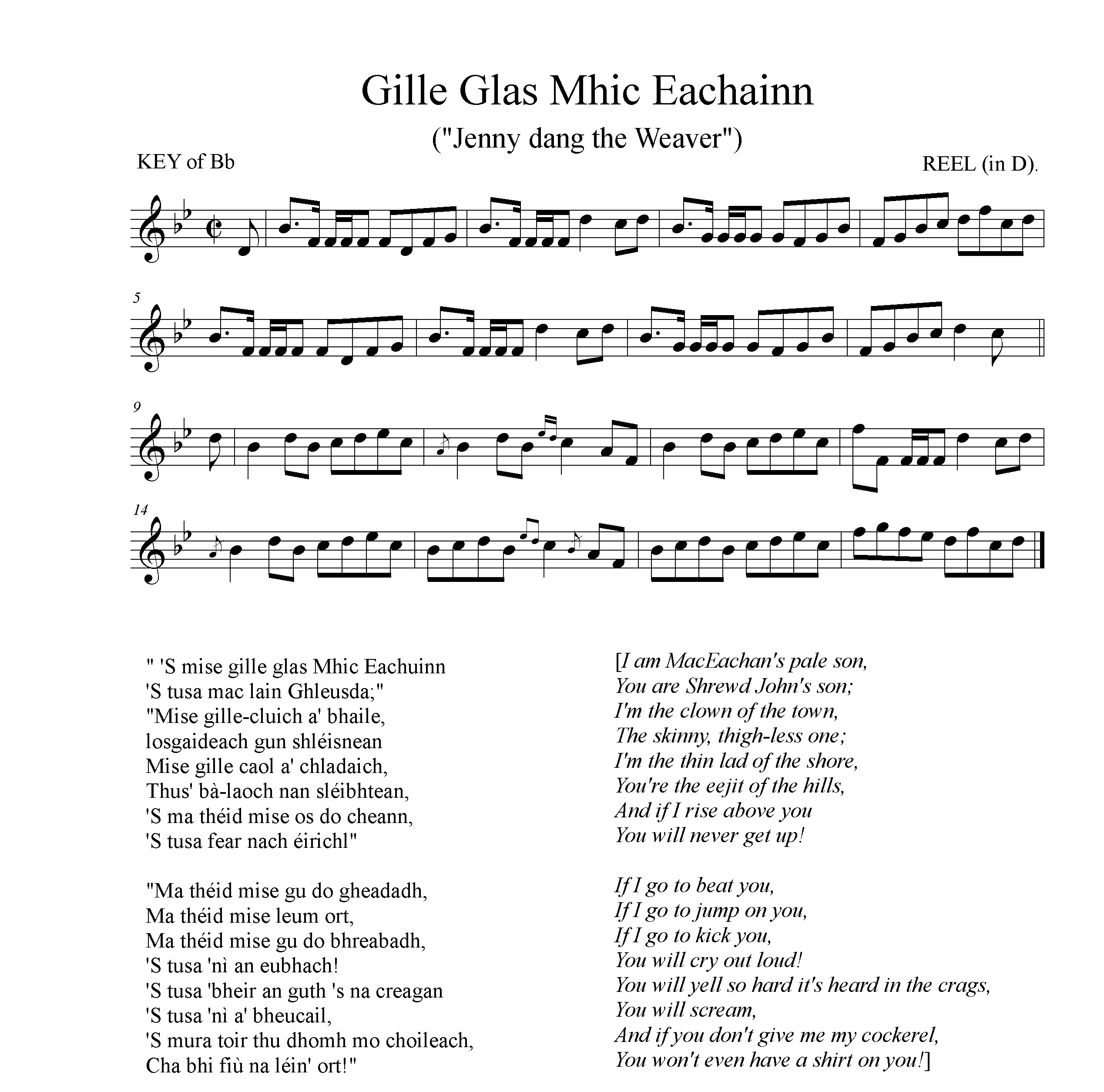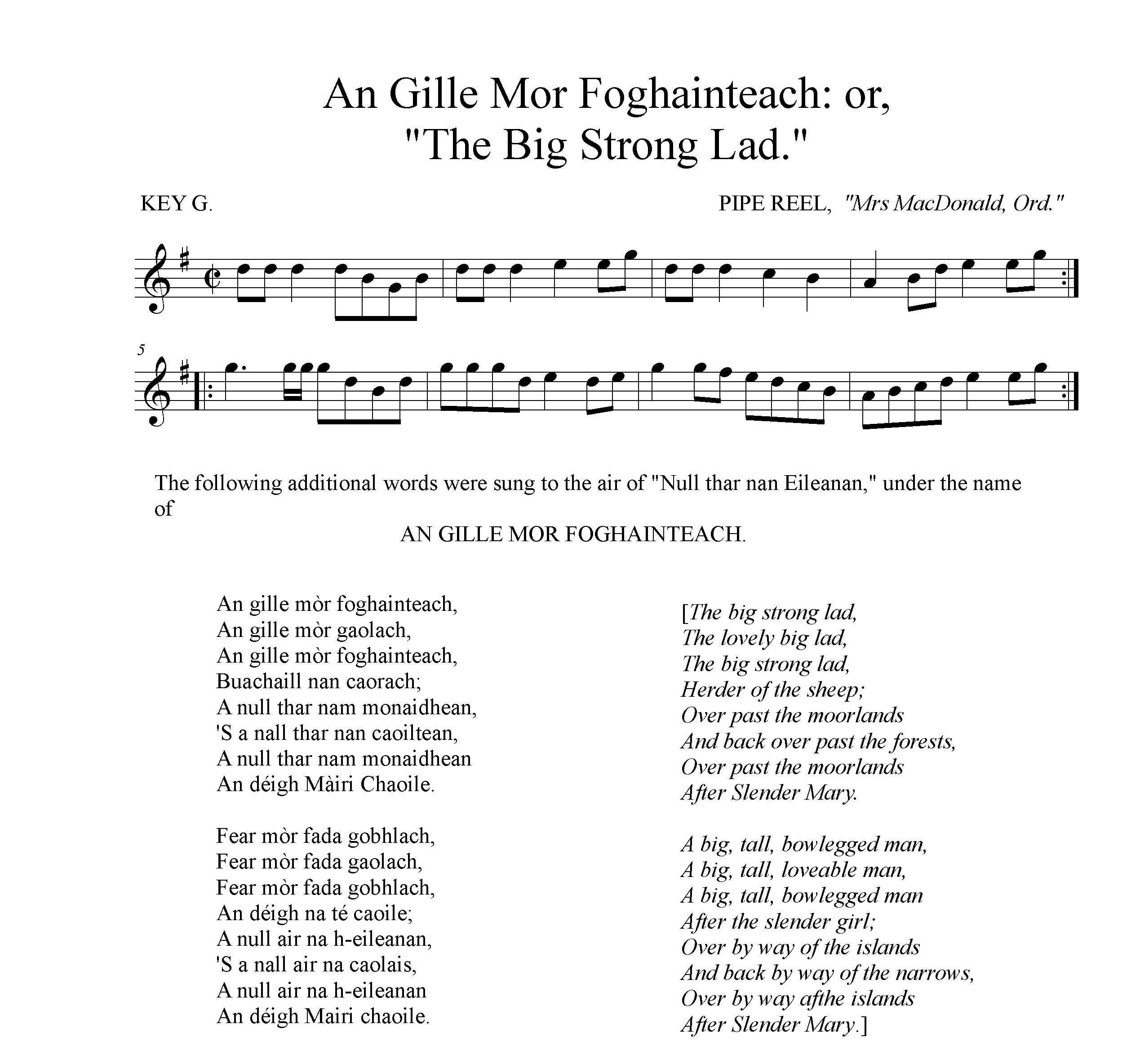The Oban Times, 2 February, 1901
Puirt-A-Beul
“Mouth-tunes,” or “Songs for Dancing.”
By Dr. Keith N. MacDonald
Delvin Side.
One of our very finest strathspeys, and one of the older ones too, is “Delvinside,” the composer of which has never been discovered. It has been claimed for “Delvin” in Perthshire and “Dulnan,” six miles above Grantown-on-Spey, but it is impossible now to say where it first originated. The writer is of opinion that, though it first appeared in piano music, it was originally a pipe tune, and was arranged on the key of D by the Gows* and others. It is very strange that the authors of some of our best strathspey music are unknown, which, in the writer’s opinion, is evidence in favour of their antiquity. This tune is rather difficult to play well. The Gows had too many cuts in it, but as played by the old Highland fiddlers, there is no strathspey to beat it as a dancing tune. Its very rhythm suits the steps admirably. The evidence in favour of its being a pipe tune is most marked in the last two bars of the set in the “Skye Collection” of reels, though, as at present arranged, it goes beyond the scope of the bagpipe. Mr Alexander Troup of Ballater, an excellent authority on the authorship of our national music, informs me that fully 20 years ago the people of “Dulnanside” claimed the tune, and there was an article or paragraph in the “People’s Journal” at the time in reference to it. The river Dulnan is often still called “Delvin,” and in the locality there are words known to the tune as follows:–
Bonnie lass of Delvin side
*And bonnie lass of Delvin water.
The Gows of Perthshire (the composer’s people) are said to have come originally from the classic country of Strathspey.
*ED. The “Gows” referred to here is the “Repository of the Dance Music of Scotland” (1799). The entire facsimile is available at the following site. See p. 15

Many of the “puirt-a-beul” were extremely personal and pungent. Unfortunate people with any peculiarity about them were sure to be made the subject of a “port,” and the language used was not very particular either. “Gille Glas Mhic Eachainn,” Hector’s Pale Son, is an example. He threatens to extinguish the life of his opponent and rival, and predicts the shouting of his enemy when he got well kicked. These were usually composed by irresponsible young men out of fun and devilment, combined with more or less viciousness. The “Gille Glas” is to the air of “Jenny dang the Weaver,” a capital reel. In those “puirt” where there are 8 lines in the first part and 8 in the second, it will be understood that the first measure of the usual 4 bars is sung twice over. The reason the second measure has always got eight bars is because the two last bars often differ in the 1st and 2nd time the second measure is played. The first measure rarely assumes this character.

